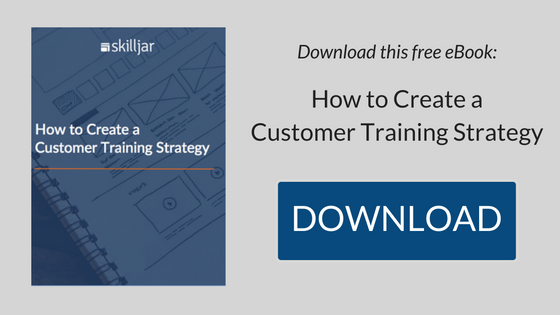
On Thursday, February 23, Skilljar’s Training Manager, Linda Schwaber-Cohen participated in an AMA with SuccessHacker on “Training Strategies for Customer Success.”
The full transcript can be viewed here. But for those of you who are short on time, we’ve put together the following post, which has been edited for clarity and length.
Continue reading for a few key takeaways from the conversation.
What are some common challenges that you’ve seen companies run into when trying to drive adoption of training, and what are some neat ways to address them?
There are a few challenges we see pretty frequently - a big one would be compelling customers to attend or take training when it’s not mandatory, and to do so in a timely manner. Customers have such a wide range of priorities and it's hard to get to the top of that list.
In customer success we spend a lot of time thinking about accelerating time to value for a customer, and we know that customers will really only get value out of a product if they have a solid understanding of how to use it.
One tactic I’ve seen a lot of companies use to overcome this is certification. It creates a more literal give-and-get that goes above and beyond knowledge. A customer completes a series of learning modules or courses, takes an assessment, and is granted a certification. Plus, they now have some tangible level of knowledge or expertise around your product or space.
Do you have any other ideas for motivating the end users who may not be as invested?
You can leverage some large launch activities when possible. Set deadlines on an implementation plan and get everybody on board with checking in. Usually this will be a forcing function because the champion often manages the daily users. By this date, we're all going to have a call and review this important milestone in your path to value.
And of course, if you have the resources, live training is pretty hard for customers to avoid. If someone is in the room with you, and you're engaging with them, they are going to get something out of it. When I was training customers virtually, I used to feel challenged by the fact that many of them would feel unengaged, so I started planning questions that I would ask frequently, and constantly re-engage with them. It catches them off guard and they know they are on the hook for coming along for the ride. Don't let training be a passive activity.
You obviously speak to many many more training professionals than I do and I’m sure you’ve seen some great examples of how to keep training engaging, enjoyable and rewarding?
Great question and one that training professionals are always trying to crack the code on. Course completion isn't everything when it comes to engagement, but if customers are completing a course, you at least know that they are sticking with it.
We found a huge drop off in completion for courses that took longer than 30 minutes -- a good guideline when creating on-demand content. Video was another significant driver of completion with on-demand content. It's definitely a preferred way to learn these days.
For live training, especially Virtual Instructor Led Training (VILT), I think it’s important to meet the needs of the attendees and engage with them, similar to what I mentioned before for in-person training.
Regarding VILT, if customers wanted to just listen, they would watch a video. You need to do some discovery and meet them where they are. By discovery, I mean ask them questions about what they know and don't know, what their goals are, and what they want to learn. Then teach to those points. I think that’s the key to having a truly engaging program.
Finally, let’s talk about how to design training so that it effectively drives changes of behavior or specific actions in the product that you know help customers to extract value and become more sticky.
One problem here is that we all want to think of the big picture and we don't analyze the characteristics of the "healthy customer." What are the best things that customers do that propel them to value and health?
When you’re trying to drive adoption of certain features or behaviors, you have to think of training as a marketing engine for those features and combine good teaching with good marketing. To me, that means you need to have a specific end goal in mind, and use calls to action to get customers to do whatever it is you need them to do while it’s fresh in their mind.
Some of this can also be considered muscle memory - if you’re leveraging LMS technology, you can embed your practice environment or application and have your customers practice whatever you’re asking them to do. They need to get in the habit of doing these super healthy behaviors that drive value.
The other big part of driving impact is measurement. If you are experimenting with tactics to drive a specific type of usage, make sure you can measure impact in the product and have a good understanding of how that impact maps back to your tactics. You may want to collaborate with your Product team to make sure you have access to the right measurement tool for this.

